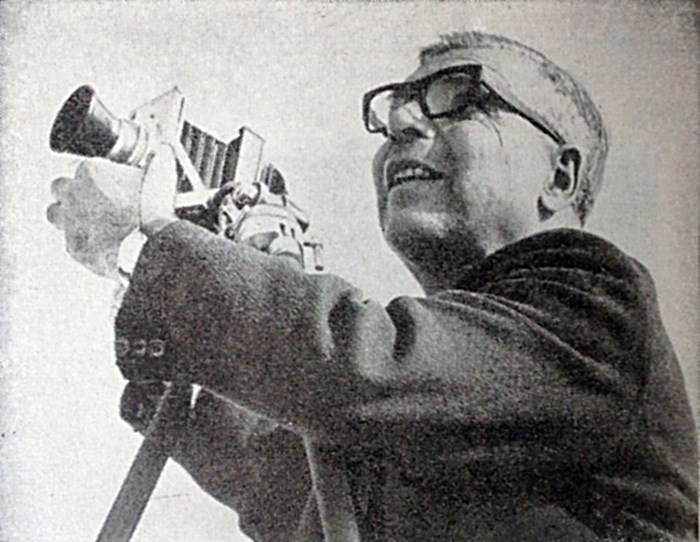
Babken Mavisakalyan
1910 - 1994
1940 - 1980s
Babken Mavisakalyan’s name occupies a special place in the annals of documentary photography of Armenia, due to this photographer’s prolific and longevous practice. Having survived the last carnages of the Armenian Genocide, Mavisakalyan had escaped with his family from Izmir in 1922, and was temporarily stationed in Greece, before establishing himself in Lyon in 1925. An avowed communist and patriot, Mavisakalyan eventually decided to come to Soviet Armenia, and joined the first wave of repatriates from France in 1936. After settling in Yerevan, he quickly integrated himself into the cultural life of the capital. With his professional skills as an accordionist, he found work in Tsolak Vardazaryan’s troop of musicians and from 1938 was engaged in Artemi Ayvazyan’s first Armenian state jazz ensemble. The group played mostly in the foyer of the newly-opened Moscow cinema and some of the city’s restaurants, while also touring with concerts around Armenia and also performing in Moscow.(1)
Temporarily ceasing his artistic activity, Mavisakalyan was sent to the war front and, as an ordinary soldier, fought until the end of the Great Patriotic War. Immediately upon returning to Yerevan he resumed playing the accordion for several years, but from 1948 onwards Mavisakalyan acted primarily as a photographer, publishing his first images in the newly-created Sovetakan Hayastan (Soviet Armenia) magazine. According to Vahan Kochar, Mavisakalyan studied photography with Torkom Boyadjyan, together with Rafayel Hambardzumyan.(2)
At the initial stage of his career, the photographer worked in different cities of Armenia, including Artashat and Tsakhkadzor, where he opened photography studios. Later, in 1961-1973, he entered the sphere of museums, working as a permanent staff photographer at the History Museum of Armenia and the State Gallery of Armenia. However, it was reportage and documentary photography that were of primary interest to Mavisakalyan. In tandem with his official work duties and at his own initiative, he regularly portrayed a wide variety of subjects pertaining to Armenia, including the country's natural landscape, industrial achievements, architecture and especially cultural figures. These images have been regularly reproduced in nearly all Soviet-Armenian periodical publications, as well as in separate books.
Mavisakalyan’s photographic vision was shaped under the aegis of his patriotism and unwavering commitment to communist ideas. In many of his adulatory photographs of Soviet lifestyle, the image serves not only for representing but also for implementing the creed of socialism. Deprived of any analytical function, these photographs mirror ideology, representing Soviet Armenia as a communist paradise. Even in his romantically imbued epic landscapes, Mavisakalyan presents nature as a conquered by and docilely serving humanity. From this angle, the photographer’s portraits of Armenian writers and other figures of the cultural elite, such as Martiros Saryan, Yervand Kochar, Carzou, Tatevik Sazandaryan, Hakob Hakobyan and others are especially interesting. The intellectual appears here as a key denominator of modernity and an affirmative axis of national identity. During the last years of his life, Mavisakalyan primarily focused on the photography of art objects, moving away from the arena of field reportage and documentary photography.
1) (unsigned) ‘Beghun Tariner’ [‘Productive Years’, in Armenian], Sovetakan Hayastan, no.10, 1984
2) Vahan Kochar, Hay Lusankarichner [Armenian Photographers, in Armenian], self-published, Yerevan, 2007, p.242
Nationality
Armenian
Region
USSR, Armenia, ArmSSR, Ottoman Empire
City
Izmir (b.), Yerevan
Activity
artistic, documentary, photo correspondent, photojournalist
Media
analogue photography
Bibliography
(unsigned) ‘Beghun Tariner’ [‘Productive Years’, in Armenian], Sovetakan Hayastan, no.10, 1984
Kochar, Vahan. Hay Lusankarichner [Armenian Photographers, in Armenian], self-published, Yerevan, 2007, pp.242-245




